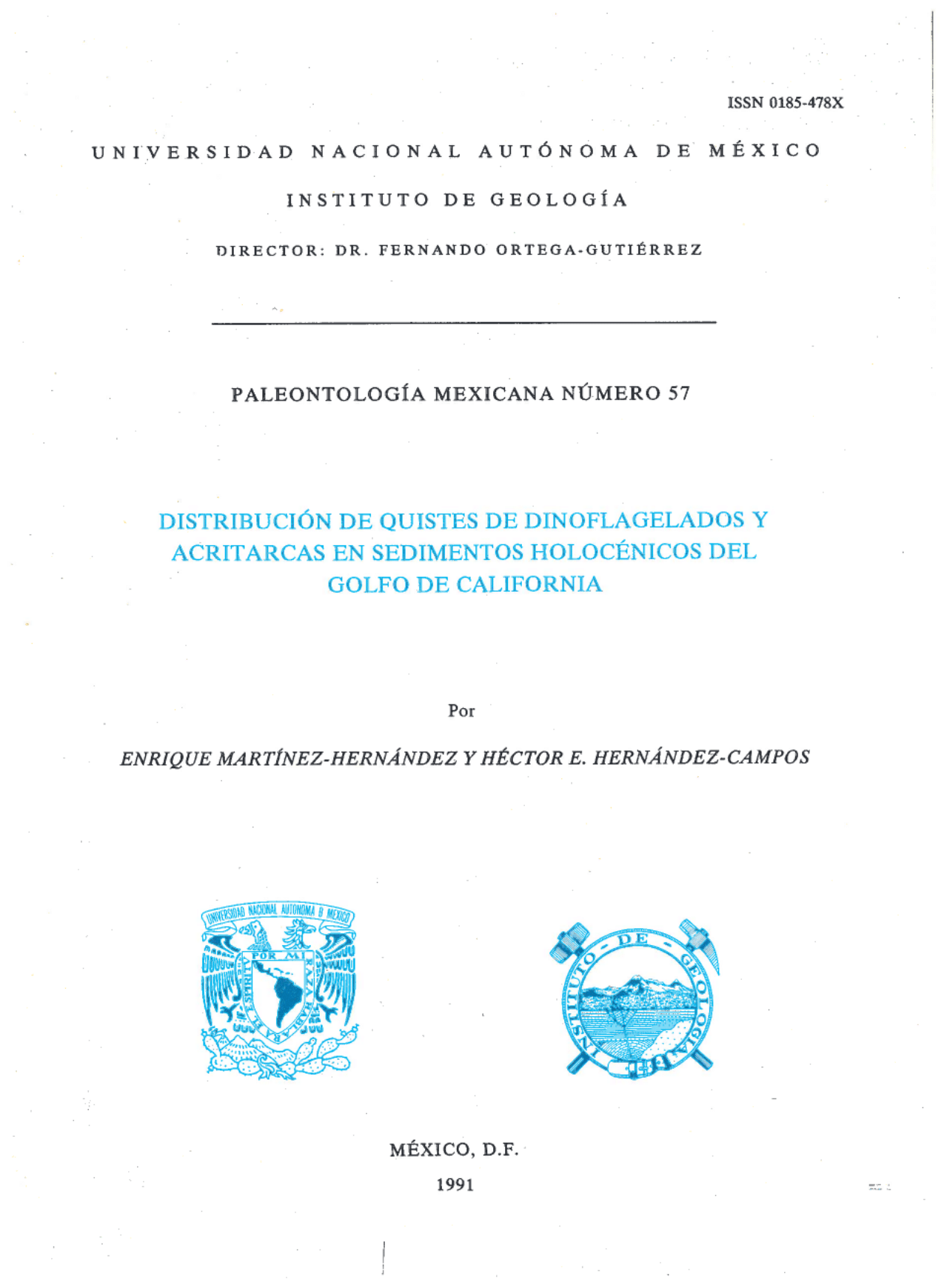Distribution of Dinoflagellate cysts and Acritarchs in Holocene sediments of the Gulf of California
Main Article Content
Abstract
The preliminary results presented in this paper are based on the study of 47 samples collected in the Cruise BAP 83, which covered from the 30° latitude (Salsipuedes basin) to the 23°41’N (mouth of the Gulf of California).
A total of 31 morphotypes of "dinocysts" were recovered, among which the most important are the following taxa: Protoperidinium avellana, Protoperidinium conicoides, Nemastophaeropsis labyrinthea, Operculodinium centrocarpum, Protoperidinium compressum, Protoperidinium conicum, Protoperidinium oblongum, Spiniferites bentori, Spniferites mirabilis, Spiniferites ramosus var. ramosus, Tuberculodinium vancampoae, and the dinocysts types "B", "C" and "D" of Reid and Harland, 1977. According to the diversity and relative frequency of the above mentioned taxa, it can be concluded that in the interior of the Gulf of California, the cysts with peridinoid affinities predominate in the assemblages, but the most abundant cysts throughout the gulf are of type "C" of Reid and Harland, 1977, and related forms.
Quantitatively, dinocysts are presented in a variable number in laminated as well as massive sediments, without being restricted to any particular sedimentary facies; however, the most diverse assemblages are found in homogeneous sediments.
The general distribution pattern of the number of dinocysts per gram of sediment suggests that rates of deposition and texture of the sediment control the amount of cysts along the gulf, independently of the bathymetry and the distance from shore. The same pattern is maintained even in upwelling zones, where there is no significant increase in the number of dinocysts.
Qualitatively, in the Gulf of California, most of the species have an ubiquitous distribution; however, some species became very abundant in certain areas. In this case, the cyst assemblage is dominated by certain species which probably reflect oceanographic conditions of that region; for instance, the dinocyst assemblage in phosphorites is characterized by the abundance of gonyaulacoid taxa such as Polysphaeridium zohary (34%), Spiniferites ramosus var. ramosus (21%), and Operculodinium centrocarpum (16%), suggesting the influence of the currents of California and the Pacific in the genesis of the phosphorite, while in the interior of the gulf prevail oceanographic conditions typical of an enclosed basin, where the peridinoid cysts are the main component of the assemblages.
In conclusion, the pattern of distribution of dinocysts in the gulf cannot be generalized, due to the complex hydrological system, which influences the type of plankton living in the water column, as well as the transportation and final deposition of the produced dinocysts.
